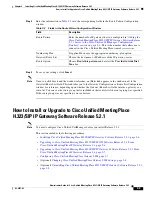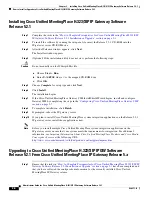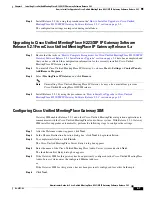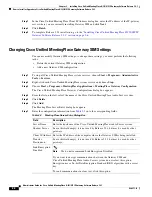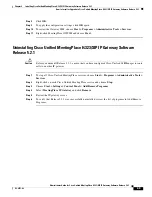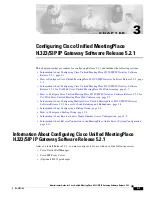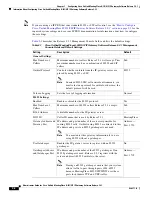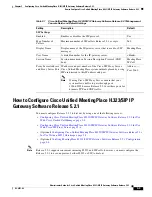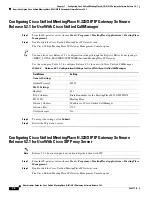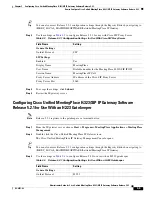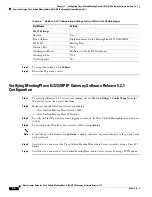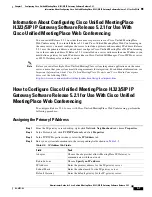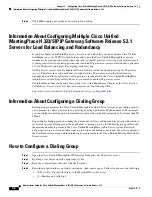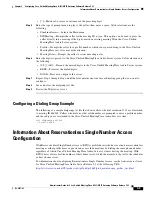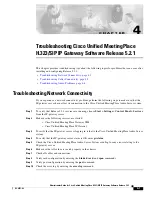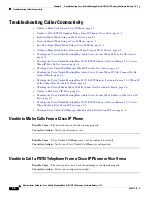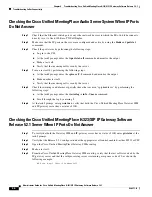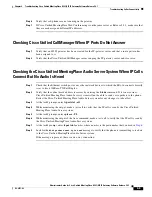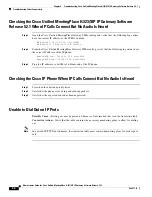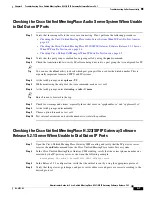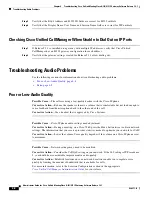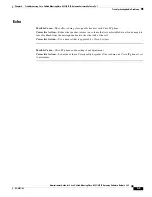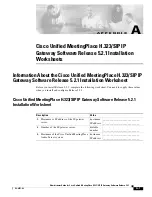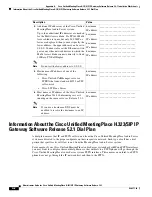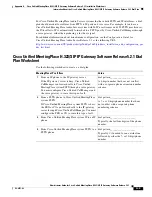
3-8
Administrator Guide for Cisco Unified MeetingPlace H.323/SIP IP Gateway Software Release 5.2.1
OL-6571-02
Chapter 3 Configuring Cisco Unified MeetingPlace H.323/SIP IP Gateway Software Release 5.2.1
Information About Configuring Multiple Cisco Unified MeetingPlace H.323/SIP IP Gateway Software Release 5.2.1
Step 5
Click
OK
to apply your settings and return to the desktop.
Information About Configuring Multiple Cisco Unified
MeetingPlace H.323/SIP IP Gateway Software Release 5.2.1
Servers for Load Balancing and Redundancy
If you have deployed multiple IP-gateway servers to route IP calls, you can configure Cisco Unified
CallManager or your IP PBX to load balance and to provide Cisco Unified MeetingPlace system
redundancy by creating route groups that send calls to other IP-gateway servers if gateway failure occurs.
A route group allows you to designate the order in which IP-gateway servers are selected and to prioritize
a list of IP-gateways and ports for outgoing trunk selection.
All IP-gateway servers actively handle calls, and calls are routed round-robin among the IP-gateway
servers. Therefore, in-session calls that are connected to a IP-gateway server that has failed are
disconnected, and those callers must call again to be reconnected to the Cisco Unified MeetingPlace
Audio Server system. New callers, however, are routed to another IP-gateway server.
For information about configuring route groups, see to the Redundancy Chapter in the
Cisco Unified
CallManager System Guide
for your software release at the following URL:
http://www.cisco.com/univercd/cc/td/doc/product/voice/c_callmg/index.htm
Information About Configuring a Dialing Group
Dialing groups customize the Cisco Unified MeetingPlace Audio Server system by presenting specific
voice prompts to callers who dial in to a meeting by using a particular IP phone number. For example,
you can configure a dialing group to immediately place callers who dial extension 2121 into meeting ID
656565.
You configure dialing groups by editing the dialgroups.txt file to include the dial pattern with which to
associate a specific dialing group; the application, or prompt, to play for the dialing group callers; and
the meeting number to present to the Cisco Unified MeetingPlace Audio Server system. Entries in
dialgroups.txt are processed in order from top to bottom. If a match is not found, the caller is placed at
the CombinedAccess menu, and the dialed digits are presented to the Cisco Unified MeetingPlace Audio
Server system.
How to Configure a Dialing Group
Step 1
Open the Cisco Unified MeetingPlace IP Gateway folder on your IP-gateway server.
Step 2
By using a text editor, open the dialgroups.txt file.
Step 3
Read the comment lines that start with the # symbol.
Step 4
Enter the dial pattern that you want to customize; then, enter a space. Valid selections are the following:
•
[0-9] [ A-D]—Presents the digits to the MeetingPlace audio server.
•
[.]—Matches any valid digit.


